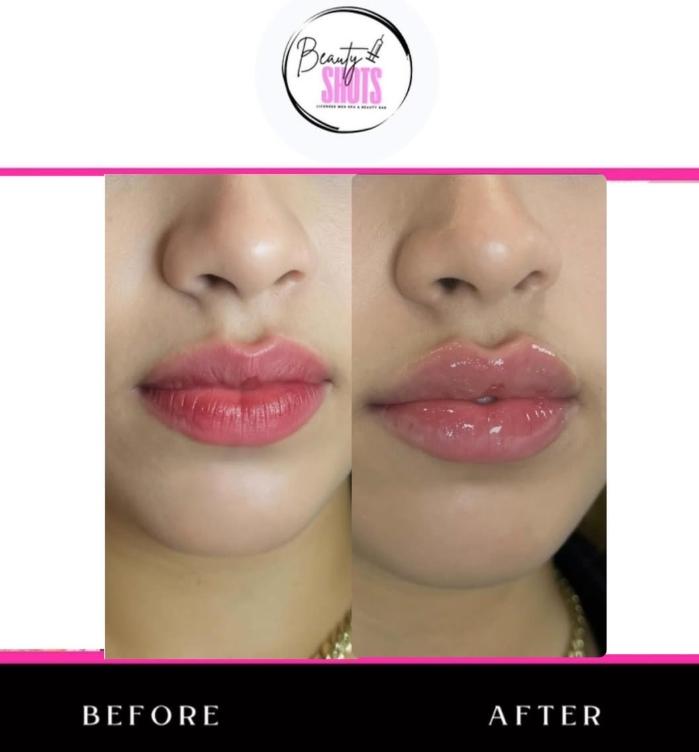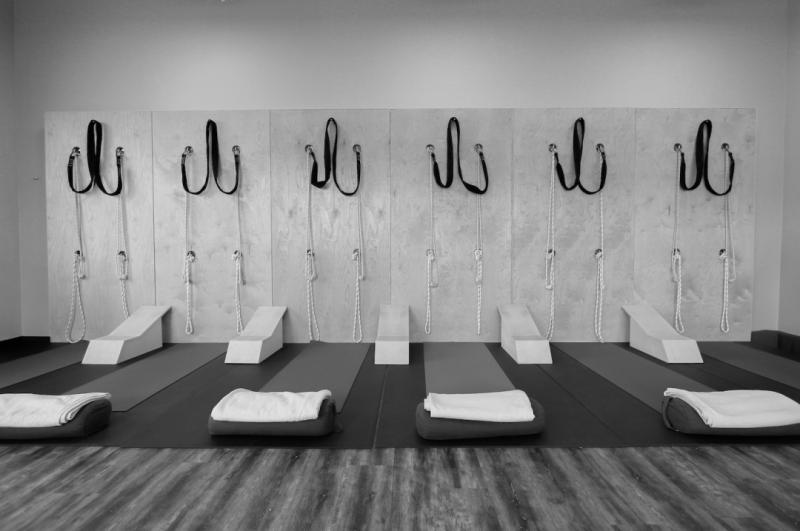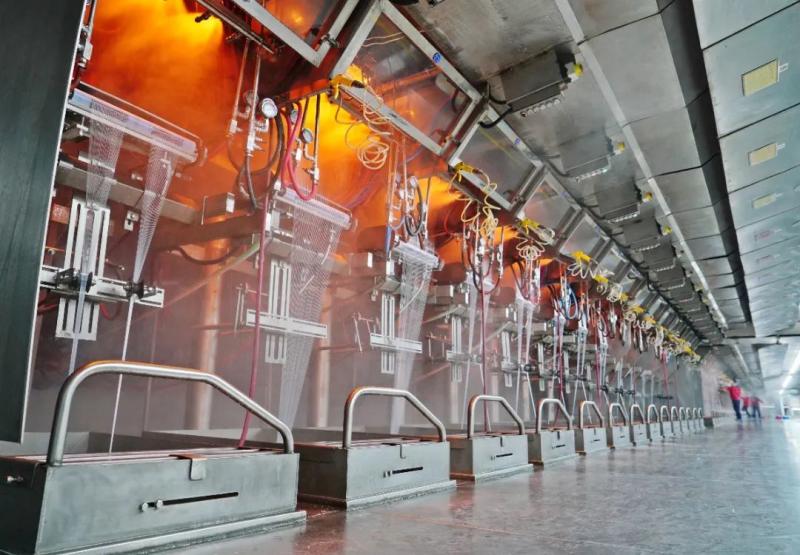Press release
Temperature Control and Flame Regulation in E-Glass (Alkali-Free Fiberglass) Tank Furnace Production
E-glass (alkali-free fiberglass) [https://www.fiberglassfiber.com/fiberglass-roving/] production in tank furnaces is a complex, high-temperature melting process. The melting temperature profile is a critical process control point, directly influencing glass quality, melting efficiency, energy consumption, furnace life, and the final fiber performance. This temperature profile is primarily achieved by adjusting flame characteristics and electric boosting.I. Melting Temperature of E-Glass
1. Melting Temperature Range:
The complete melting, clarification, and homogenization of E-glass typically require extremely high temperatures. The typical melting zone (hot spot) temperature generally ranges from 1500 degrees C to 1600 degrees C.
The specific target temperature depends on:
* Batch Composition: Specific formulations (e.g., presence of fluorine, high/low boron content, presence of titanium) affect melting characteristics.
* Furnace Design:Furnace type, size, insulation effectiveness, and burner arrangement.
* Production Goals: Desired melting rate and glass quality requirements.
* Refractory Materials: The corrosion rate of refractory materials at high temperatures limits the upper temperature.
The fining zone temperature is usually slightly lower than the hot spot temperature (approximately 20-50 degrees C lower) to facilitate bubble removal and glass homogenization.
The working end (forehearth) temperature is significantly lower (typically 1200 degrees C - 1350 degrees C), bringing the glass melt to the appropriate viscosity and stability for drawing.
2. Importance of Temperature Control:
* Melting Efficiency: Sufficiently high temperatures are crucial for ensuring complete reaction of the batch materials (quartz sand, pyrophyllite, boric acid/colemanite, limestone, etc.), full dissolution of sand grains, and thorough gas release. Insufficient temperature can lead to "raw material" residue (unmelted quartz particles), stones, and increased bubbles.
* Glass Quality: High temperatures promote clarification and homogenization of the glass melt, reducing defects such as cords, bubbles, and stones. These defects severely impact fiber strength, breakage rate, and continuity.
* Viscosity: Temperature directly influences the viscosity of the glass melt. Fiber drawing requires the glass melt to be within a specific viscosity range.
* Refractory Material Corrosion: Excessively high temperatures drastically accelerate the corrosion of furnace refractory materials (especially electrofused AZS bricks), shortening furnace life and potentially introducing refractory stones.
* Energy Consumption: Maintaining high temperatures is the primary source of energy consumption in tank furnaces (typically accounting for over 60% of total production energy consumption). Precise temperature control to avoid excessive temperatures is key to energy saving.
II. Flame Regulation
Flame regulation is a core means of controlling the melting temperature distribution, achieving efficient melting, and protecting the furnace structure (especially the crown). Its main goal is to create an ideal temperature field and atmosphere.
1. Key Regulation Parameters:
* Fuel-to-Air Ratio (Stoichiometric Ratio) / Oxygen-to-Fuel Ratio (for oxy-fuel systems):
* Goal: Achieve complete combustion. Incomplete combustion wastes fuel, lowers flame temperature, produces black smoke (soot) that contaminates the glass melt, and clogs regenerators/heat exchangers. Excess air carries away significant heat, reducing thermal efficiency, and can intensify crown oxidation corrosion.
* Adjustment: Precisely control the air-to-fuel ratio based on flue gas analysis (O, CO content). E-glass [https://www.fiberglassfiber.com/fiberglass-roving/] tank furnaces typically maintain flue gas O content at around 1-3% (slightly positive pressure combustion).
* Atmosphere Impact: The air-to-fuel ratio also influences the furnace atmosphere (oxidizing or reducing), which has subtle effects on the behavior of certain batch components (like iron) and glass color. However, for E-glass (requiring colorless transparency), this impact is relatively minor.
* Flame Length and Shape:
* Goal: Form a flame that covers the melt surface, possesses certain rigidity, and has good spreadability.
* Long Flame vs. Short Flame:
* Long Flame: Covers a large area, temperature distribution is relatively uniform, and causes less thermal shock to the crown. However, local temperature peaks might not be high enough, and penetration into the batch "drilling" zone might be insufficient.
* Short Flame: Strong rigidity, high local temperature, strong penetration into the batch layer, conducive to rapid melting of "raw materials." However, coverage is uneven, easily causing localized overheating (more pronounced hot spots), and significant thermal shock to the crown and breast wall.
* Adjustment: Achieved by adjusting burner gun angle, fuel/air exit velocity (momentum ratio), and swirl intensity. Modern tank furnaces often use multi-stage adjustable burners.
* Flame Direction (Angle):
* Goal: Effectively transfer heat to the batch and glass melt surface, avoiding direct flame impingement on the crown or breast wall.
* Adjustment: Adjust the pitch (vertical) and yaw (horizontal) angles of the burner gun.
* Pitch Angle: Affects the flame's interaction with the batch pile ("licking the batch") and coverage of the melt surface. An angle that is too low (flame too downward) might scour the melt surface or batch pile, causing carryover that corrodes the breast wall. An angle that is too high (flame too upward) results in low thermal efficiency and excessive heating of the crown.
* Yaw Angle: Affects flame distribution across the furnace width and the hot spot position.
2. Goals of Flame Regulation:
* Form a Rational Hot Spot: Create the highest temperature zone (hot spot) in the rear part of the melting tank (usually after the doghouse). This is the critical area for glass clarification and homogenization, and acts as the "engine" controlling the glass melt flow (from the hot spot towards the batch charger and working end).
* Uniform Melt Surface Heating: Avoid localized overheating or undercooling, reducing uneven convection and "dead zones" caused by temperature gradients.
* Protect Furnace Structure: Prevent flame impingement on the crown and breast wall, avoiding localized overheating that leads to accelerated refractory corrosion.
* Efficient Heat Transfer: Maximize the efficiency of radiant and convective heat transfer from the flame to the batch and glass melt surface.
* Stable Temperature Field: Reduce fluctuations to ensure stable glass quality.
III. Integrated Control of Melting Temperature and Flame Regulation
1. Temperature is the Goal, Flame is the Means: Flame regulation is the primary method for controlling the temperature distribution within the furnace, especially the hot spot position and temperature.
2. Temperature Measurement and Feedback: Continuous temperature monitoring is conducted using thermocouples, infrared pyrometers, and other instruments positioned at key locations in the furnace (batch charger, melting zone, hot spot, fining zone, forehearth). These measurements serve as the basis for flame adjustment.
3. Automatic Control Systems: Modern large-scale tank furnaces widely employ DCS/PLC systems. These systems automatically control the flame and temperature by adjusting parameters like fuel flow, combustion air flow, burner angle/dampers, based on preset temperature curves and real-time measurements.
4. Process Balance: It's essential to find an optimal balance between ensuring glass quality (high-temperature melting, good clarification and homogenization) and protecting the furnace (avoiding excessive temperatures, flame impingement) while reducing energy consumption.
Image: https://www.fiberglassfiber.com/uploads/Temperature-Control-and-Flame-Regulation-in-E-Glass-Alkali-Free-Fiberglass-Tank-Furnace-Production1.jpg [https://www.fiberglassfiber.com/fiberglass-roving/]
Media Contact
Company Name: China Beihai Fiberglass Co., Ltd.
Email:Send Email [https://www.abnewswire.com/email_contact_us.php?pr=temperature-control-and-flame-regulation-in-eglass-alkalifree-fiberglass-tank-furnace-production]
Country: China
Website: https://www.fiberglassfiber.com/
Legal Disclaimer: Information contained on this page is provided by an independent third-party content provider. ABNewswire makes no warranties or responsibility or liability for the accuracy, content, images, videos, licenses, completeness, legality, or reliability of the information contained in this article. If you are affiliated with this article or have any complaints or copyright issues related to this article and would like it to be removed, please contact retract@swscontact.com
This release was published on openPR.
Permanent link to this press release:
Copy
Please set a link in the press area of your homepage to this press release on openPR. openPR disclaims liability for any content contained in this release.
You can edit or delete your press release Temperature Control and Flame Regulation in E-Glass (Alkali-Free Fiberglass) Tank Furnace Production here
News-ID: 4140556 • Views: …
More Releases from ABNewswire

West Chester Showroom Reports Increased Interest in Sectional Couches and Afford …
Furniture & Cabinet Outlet serves West Chester's growing community with wholesale-priced home furnishings, offering extensive showroom selections and below-retail pricing for residents of the Tri-State area.
West Chester Township, OH - As housing markets shift and homeowners seek affordable ways to refresh their living spaces, Furniture & Cabinet Outlet continues to serve the Tri-State area with wholesale-priced home furnishings. The Service Center Drive showroom has become a destination for residents searching…

Beauty Shots NOVA Redefines Non-Surgical Body Contouring in Northern Virginia
Founder Natascha Harris pioneers ultrasound-guided aesthetic treatments for safer, natural-looking results.
Image: https://www.abnewswire.com/upload/2025/10/c5a5f59da37c1aa322df6881e23a4d74.jpg
Vienna, VA - In an era where safety and results are equally vital in aesthetics, Beauty Shots NOVA, led by founder and aesthetic specialist Natascha Harris, is setting a new standard in non-surgical beauty care. Located at 8607 Westwood Center Dr, Suite 100 in Vienna, Virginia, the premier medspa is revolutionizing body contouring and cosmetic enhancement through ultrasound-guided procedures…

Abby Yoga Studio Expands with Private Yoga Therapy Sessions
Certified Yoga Therapy instructor offers tailored Iyengar-based practices for health needs.
Image: https://www.abnewswire.com/upload/2025/10/f6b927744919d106273aa8b6f23c144c.jpg
Abbotsford, BC - Abby Yoga Studio has introduced private yoga therapy sessions, focusing on personalized assessments and adapted practices for individuals or small groups. Applying Iyengar yoga therapy principles, these one-on-one or limited-group classes address physical and emotional challenges, integrating mind-body healing to restore natural function.
Led by Eileen Millar, a Level Three certified Iyengar teacher and C-IAYT yoga therapist,…

Zil Money Launches ZilRemit as Dedicated International Payment Platform
New Standalone Platform Offers Seamless, Low-Cost Global Payments for Businesses and Personal Use, with Easy App Access and Faster Transaction Processing.
Image: https://www.abnewswire.com/upload/2025/10/491fa4dc34bd8bd434ab18aeac2e7e4f.jpg
TYLER, TX, USA - Oct 09, 2025 - Zil Money, a leading B2B payment platform, today announced the launch of ZilRemit, a dedicated platform for its international payment services. The new platform provides a focused identity for the company's high-speed, low-cost global payment solution, enabling businesses and individuals to…
More Releases for Flame
Emerging Trends Influencing The Growth Of The Flame Arrestor Market:New Product …
The Flame Arrestor Market Report by The Business Research Company delivers a detailed market assessment, covering size projections from 2025 to 2034. This report explores crucial market trends, major drivers and market segmentation by [key segment categories].
How Big Is the Flame Arrestor Market Size Expected to Be by 2034?
In recent years, the flame arrestor market has seen substantial growth. The market, which stood at $5.49 billion in 2024, is predicted…
Flame Proof Lighting Market by Product Type (Flame Proof Fluorescent Lighting, L …
Flame proof lightning is popularly known as intrinsically safe and lights hazard location lighting. These lighting systems are commonly used in areas where flammable petrochemical pulverized dust and vapors have potential to exist, such as, gas and oil industry, where volatile and highly flammable matters are handled. Flame proof lightning systems have a long duration working potential without any start up complications or production of heat. In addition, flame proof…
Global Flame Retardants Market Witnesses Vivid Opportunities due to Increase in …
At present, the global flame retardants market witnesses vivid opportunities due to the increase in demand for flame retardant chemicals in a wide number of end use industries. Flame retardants such as polyolefin nanocomposites find major use in the automotive industry and other end user industries such as packaging, building and construction, appliances, electrical and electronics, tools and sporting equipment.
Flame Retardants Market Report, published by Allied Market Research, projects that…
Flame Proof Lighting Market by Product Type (Flame Proof Fluorescent Lighting, L …
Flame proof lightning is popularly known as intrinsically safe and lights hazard location lighting. These lighting systems are commonly used in areas where flammable petrochemical pulverized dust and vapors have potential to exist, such as, gas and oil industry, where volatile and highly flammable matters are handled. Flame proof lightning systems have a long duration working potential without any start up complications or production of heat. In addition, flame proof…
Flame Retardant Fabric Market Report 2018: Segmentation by Product (Inherent Fla …
Global Flame Retardant Fabric market research report provides company profile for SSM Industries, Carrington, Klopman, Trevira, Gore, Safety Components, Delcotex, ITI, Milliken, Tencate, Dupont, Mount Vernon and Others.
This market study includes data about consumer perspective, comprehensive analysis, statistics, market share, company performances (Stocks), historical analysis 2012 to 2017, market forecast 2018 to 2025 in terms of volume, revenue, YOY growth rate, and CAGR for the year 2018 to 2025,…
Global Flame Retardant Fabric Market 2017 - Leading Manufacturers Analysis in Fl …
Worldwide Flame Retardant Fabric 2017 Research Report presents a professional and complete analysis of Global Flame Retardant Fabric Market on the current situation.
In the first part, the report provides a general overview of the Flame Retardant Fabric industry 2017 including definitions, classifications, Flame Retardant Fabric market analysis, a wide range of applications and Flame Retardant Fabric industry chain structure. The 2017's report on Flame Retardant Fabric industry offers the global…
